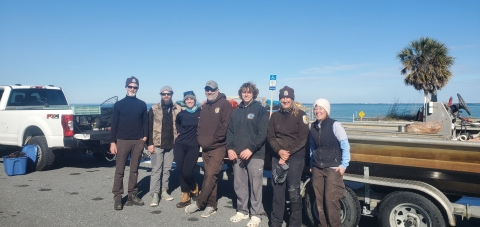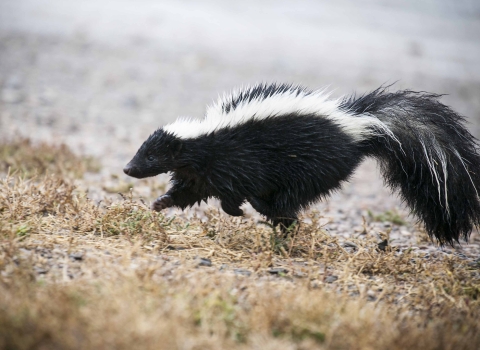Many places in Florida are used to getting sand blasted but what happens when the Sunshine State gets snow blasted? The South has many interesting and unique weather events, but snow in Florida is not usually on the radar…until it is.
The extended cold snap had turned hundreds of sea turtles into lethargic unmoving buoyant masses that were at the mercy of the waves and tides all along the Panhandle. The US Fish and Wildlife Service (USFWS), Florida Fish and Wildlife Conservation Commission (FWC), and many volunteers were led by the local US Geological Survey (USGS) turtle team to combat and overcome the crisis. Like bees in a hive, there was a hum of determination and many tasks at hand and people, unlike bees, were bundled in protective clothing moving about the St. Joseph Peninsula along Florida’s hidden gem coast. “There was an electric energy with many members of the community coming together to accomplish one mission. It truly showed how we all treasure our local natural resources, and we want to protect them. Like most things, we best accomplish that by working together.” – Sam Hermann (USFWS).
During this massive cold stun event, USGS took control of the hive and organized four distinct operations that together would save hundreds of green sea turtles and a few unfortunate loggerheads as well.
- The first step was to get crews to survey the Bay to locate floating or washed-up turtles. The survey team would have to be dropped off by boat and trudge through the cold water on foot, pick up turtles by hand, and place them on flotation devices (mostly kayaks). The surveyors would carefully place 10-15 turtles on the kayak and then walk them to the boats. This turtle ferry system was exhausting and rigorous work that would make you discover new muscles you didn’t know you had.
- Once the turtles were loaded on the boats, the weighed down vessels would head towards the land rendezvoused point. At the “turtle port”, the turtles would be unloaded from the boat one by one. The volunteers would create a conveyor belt like system of grabbing a turtle from the boat crew and caravanning it to the mark up and holding point on land. A human turtle highway quickly formed to get the job done. I believe this cannot be understated…turtles are not light creatures. They are dense awkward things often covered in barnacles, algae, and other natural occurrences that make them difficult on the nose and even more difficult to carry.
- Once the turtles were at the holding point on land, they were quickly evaluated by a turtle master, the data was added to their shell or to the holding container that turtle would be placed on. The information needed was the condition of the turtle, the location it was found, and the date.
- The final leg of the field journey was to load the turtle containers into an approved vehicle and transport them to the closest rehabilitation facility. Once the transport vehicle was at max turtle compacity, the turtle ride share would make the hour and a half journey to the closest approved rehab facility, Gulf World Marine Institute. This massive cold stun event had so many turtles that a moving van had to be rented to expedite the transport process.
At Gulf World the turtles were evaluated more thoroughly by experts. Collectively, over 1,000 sea turtles were transported to this facility. Once nursed back to life, the sea turtles will be released into the Gulf waters near where it merges with St. Joseph Bay Peninsula.
The extraordinary circumstances of this stranding event could have easily become a tragedy to the Panhandle green sea turtle population if not for the community and the conservation organizations coming together to fight for these endangered species that call our beautiful waters home.
A special thank you to US Geological Survey, US Fish and Wildlife Service Panama City, Florida Fish and Wildlife Conservation Commission, St. Joseph Peninsula State Park, Gulf World Marine Institute, and dozens of warm-hearted community members. Truly and deeply, thank you.







